Pediatric: Ain't Misbehaving on Purpose
| Power Pitch Session: How it Works | |
|
1st Hour: 2-minute Power Pitches inside the Power Pitch Theater. 2nd Hour: 60-minute Digital Poster Presentations at the numbered plasma screens outside the Power Pitch Theater. |
1st Hour
Pitch: Pediatric: Ain't Misbehaving on PurposePower Pitch
Neuro
Monday, 13 May 2019
Power Pitch Theater C - Exhibition Hall
08:15 - 09:15
Moderators: Andrea Gropman
2nd Hour
Poster: Pediatric: Ain't Misbehaving on PurposePower Pitch Poster
Neuro
Monday, 13 May 2019
Power Pitch Theater C - Exhibition Hall
09:15 - 10:15
| Plasma # | |||
0031.  |
31 | Increased brain perfusion in neonatal hypoxic ischemic injury with negative reading of DWI, T1/T2-weighted images: Implications of perfusion MRI for reperfusion response monitoring and prognostication
Qiang Zheng, Minhui Ouyang, Juan Sebastian Martin-Saavedra, Sandra Saade-Lemus, Qinlin Yu, Raymond Wang Sze, John Flibotte, John Detre, Hao Huang, Misun Hwang
Brain perfusion plays an important role in the diagnosis and prognosis of neonatal hypoxic ischemic injury (HII). However, the studies on perfusion changes in HII neonates with negative reading in conventional magnetic resonance imaging (MRI) (HII-) are rarely reported. Here, we used arterial-spin-labeled perfusion MRI to compare cerebral blood flow among health controls, HII neonates with positive reading of conventional MRI images (HII+) and HII- neonates. The results demonstrate that perfusion is altered in HII neonates even with negative reading of conventional MRI images, suggesting importance of inclusion of perfusion MRI for evaluating HII in clinical practice and research.
|
|
0032. 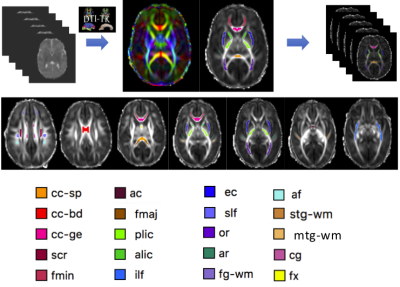 |
32 | Music in preterm infants enhances maturation of neural pathways involved in emotion processing
Joana Sa de Almeida, Lara Lordier, Benjamin Zollinger, Nicolas Kunz, Matteo Bastiani, Laura Gui, François Lazeyras, Petra Hüppi
Prematurity disrupts brain maturation during a critical period of development and music potentially enhances cognitive-socio-emotional pathways affected by prematurity. Using multi-modal MRI, we evaluated the structural impact of a music intervention during NICU stay in preterm infants’ brains, namely in WM through DTI ROI and tractography analysis and in amygdala through volumetric analysis. Overall, WM microstructural maturity was decreased in preterm control vs full-term newborns. In comparison to preterm control, preterm exposed to music demonstrate improved WM maturation in uncinate fasciculus, external capsule/claustrum/extreme capsule and larger amygdala volumes, proving a structural effect of music intervention on emotional processing neural pathways.
|
|
0033. 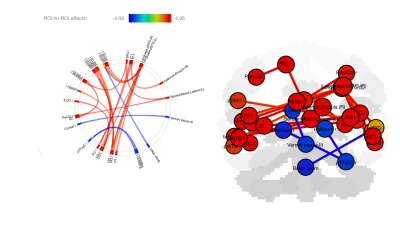 |
33 | Early Language and Motor Functional Network Connectivity from Infancy to Early Childhood
Muriel Bruchhage, Giang Chau Ngo, Sean Deoni, Viren D'Sa
While childhood is a period of rapid brain development defined by early motor and language milestones, very little is known about the development of functional networks with increasing milestone abilities. We investigated correlation patterns between resting state functional MRI network connectivity and standardized scores for motor and language milestone functions in a large cohort of typically developing children spanning from 3 months to 6 years of age. We demonstrate distinct functional network connectivity patterns for major motor and language milestone functions, which increase in number with task complexity.
|
|
0034. 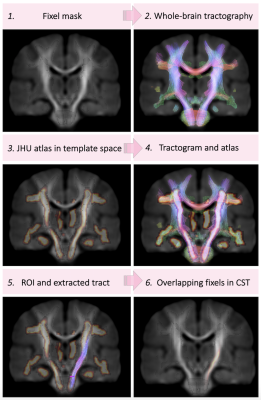 |
34 | Variations in tract-specific fibre density and morphology with puberty and behaviour across childhood
Sila Genc, Charles Malpas, Marc Seal, Timothy Silk
Microstructural development is dynamic throughout childhood and adolescence. Modelling these profiles requires statistical flexibility to understand complex interplays between related phenotypes such as sex, pubertal stage, and age. We leverage the fixel-based analysis framework and compute fibre density and morphology metrics in selective white matter tracts, to enable longitudinal mixed-effects modelling of multiple phenotypes. We show that longitudinal development of white matter fibre properties in children aged 9–14 dominates in posterior fibres. Increases in fibre density are associated with increases in pubertal stage and attention dysfunction, and protracted increases in fibre density are associated with greater internalising behaviours.
|
|
0035. 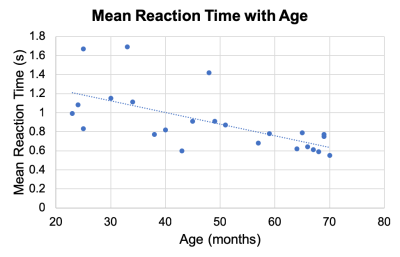 |
35 | Changes in functional brain connectivity associated with the development of executive functions during early childhood
Giang-Chau Ngo, Muriel Bruchhage, John Rogers, Joshua Beck, Viren D'Sa, Sean Deoni
Task-based functional MRI (fMRI) has been commonly used to study executive functions but may be difficult to implement for children younger than 5-year-old. In this work, resting sate fMRI is combined with in-house tablet-based tasks which evaluate reaction and inhibition control in children from 2 to 5 years of age. The aim is to determine differences in brain connectivity related to the children’s performance of these two tasks. Preliminary results demonstrated the importance of the language, visual and attention networks during the reaction task and asymmetrical changes in frontal parietal and sensorimotor network connectivity associated with the development of inhibition control.
|
|
0036. 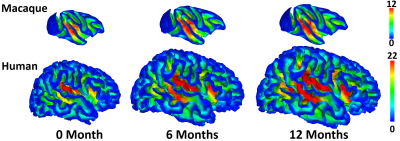 |
36 | Development-based Joint Parcellation of Human and Macaque Brains during Infancy
Jing Xia, Fan Wang, Zhengwang Wu, Li Wang, Caiming Zhang, Weili Lin, Dinggang Shen, Gang Li
Joint cortical parcellation maps of human and macaque infant brains with corresponding regions are highly desirable, since they provide basic common cortical parcels for both region-based and network-based studies of two closely-related species. Developmental patterns of infants indicate underlying rapid changes of microstructures, which determine the molecular and functional principles of the cortex. Leveraging 210 longitudinal human infant MRI scans and 140 longitudinal macaque infant MRI scans, we develop a novel method to generate the first joint parcellation maps of human and macaque infants based on their developmental patterns.
|
|
0037. 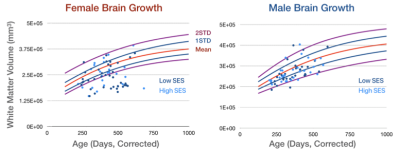 |
37 | Differences in Brain Development in a High and Low Economic Setting
Sean Deoni, Giang-Chau Ngo, Muriel Bruchhage, Douglas Dean
Adverse environmental conditions throughout infancy and childhood have potential to result in neurodevelopment delays and impaired cognitive outcomes. Children born in low and middle income countries (LMICs) often experience significant malnutrition, inadequate sanitation, and are exposed to poor water and air quality, all of which can affect brain and cognitive development. However, there are limited reports of brain growth in LMICs, with cognitive development often assessed indirectly through measures of physical growth (child height and weight). Here we present the first reports of brain volume growth in children from a low resource area of India. Relative to reference brain growth charts derived from a large cohort of healthy children in Providence RI, we find significant brain growth delay, particularly amongst girls. These results shine new light on the importance of living conditions on child brain health.
|
|
0038. 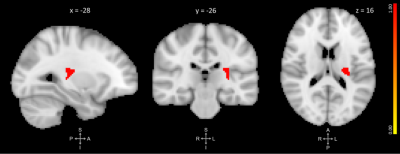 |
38 | Grey matter changes in adolescents participating in a meditation training
Justin Yuan, Colm Connolly, Eva Henje Blom, Leo Sugrue, Tony Yang, Duan Xu, Olga Tymofiyeva
Meditation is a popular mind-body practice with numerous benefits, but its neural mechanism remains unclear. Previous MRI studies have shown morphometric changes associated with meditation, such as increased grey matter volume (GMV). However, these findings were in adults and adolescents remained understudied. Using voxel-based morphometry, we assessed GMV changes in adolescents participating in a training containing elements from mindfulness meditation and yoga-based practices. We found a significant GMV decrease in the left posterior insula, a key homeostatic awareness and interoception region. The decreasing GMV opposes previous findings of structural increase in adults, which may be due to adolescence-specific developmental processes.
|
|
0039.  |
39 | Cortical Thickness and White Matter Connectivity in preschool Children with Autism Spectrum Disorder
Shijun Li, Qiansu Yang, Denghao Li, Weiwei Men, Gang Liu, Yanwei Lv, Lin Ma
Structural magnetic resonance imaging (MRI) is suitable to describe brain anatomy, and altered cortical thickness and connectivity are the keys feature of autism spectrum disorder (ASD) pathophysiology. By processing T1-weighted imaging and diffusion-tensor imaging data from same subjects, cortical thickness and white matter connectivity were shown respectively, and some differences of brain areas were found between typically developing (TD) preschool children group and ASD, which might be related to the behaviors of ASD preschool children. Compared with TD, the thickness of right middle post cingulada gyrus and sulcus increased and its close white matter's fractional anisotropy (FA) of right superior frontal area decreased (P<0.01) in ASD group. These findings may be the morphological biomarkers, which will help guide the precise intervention or treatment in preschool children with ASD as some new neural circuits.
|
|
0040 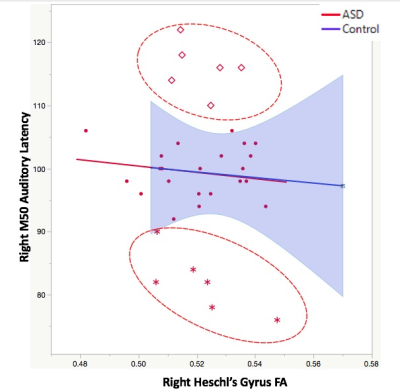 |
40 | Multimodal Stratification Biomarkers: Unravelling Electrophysiological Latency Differences in Autism Spectrum Disorder with the help of DTI and MEGAPRESS Video Permission Withheld
Timothy Roberts, Luke Bloy, Jeffrey Berman
Electrophysiological delays in sensory (e.g. auditory) evoked responses are hallmarks of ASD. However, their magnitude is heterogeneous across the autism spectrum. This study approaches latency delay from a biophysical standpoint, focusing on axonal conduction velocity and synaptic transmission speed as potential mediators of ultimate latency. Combining MEG measures of cortical response latency with MR surrogates of conduction velocity (thalamocortical white matter diffusion fractional anisotropy) and synaptic transmission (MRS estimates of the neurotransmitter GABA) allows the stratification of children with ASD into subgroups dominantly dependent on conduction velocity vs synaptic transmission respectively. Such biological stratification may offer promise for targeted intervention.
|
|
0041. 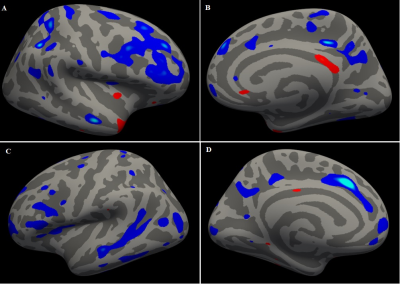 |
41 | Regional and Lateralized Cortical Thickness Measurement in Children and Adolescents with Complex Congenital Heart Disease: Effects of Age, Gender, and Ciliary Dysfunction
Thomas Lampl, Aurelia Sahel, Julia Wallace, Nancy Beluk, Vincent Lee, Cecilia Lo, Ashok Panigrahy, Rafael Ceschin
Both regional and lateralized differences in cerebral cortical thickness were noted in CHD patients compared to controls during a protracted period of critical brain development during childhood and adolescent period. The regional vulnerability was localized to important known cognitive control network including the prefrontal region, salience network and the default mode network . Importantly, ciliary motion abnormalities accounted for most of these regional and lateralized differences in cortical thickness between CHD and controls, underscoring the importance of ciliary mutations/genetic abnormalities underlying cortical dysmaturation in CHD patients.
|
|
0042.  |
42 | Brain Microstructural Changes Support Cognitive Deficits in Normal Children Born to HIV-infected Mothers
Santosh Yadav, Rakesh Gupta, Sabah Ahmed, Sheema Hashem, Ajaz Bhat, Ravindra Garg, Vimala Venkatesh, Muhammad Azeem, Mohammad Haris
In the current study, we evaluated the brain integrity [by mapping the fractional anisotropy (FA) and mean diffusivity (MD)] and neurocognitive performance (NP) in normal children (NCI) born to HIV-infected mother compared to normal children (NCH) born to healthy mother and HIV-infected children (HI). Reduced FA in multiple brain sites of HI and NCI children suggests loss of tissue integrity while altered MD indicates presence of cerebral edema. Presence of tissue changes and abnormal cognition in absence of HIV-infection in NCI children advice that ART may have detrimental effects on brain.
|
|
0043. 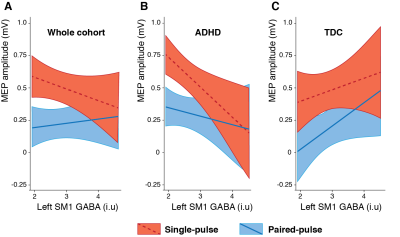 |
43 | Anomalous relationship between sensorimotor GABA levels and cortical excitability in children with Attention-deficit/hyperactivity disorder
Ashley Harris, David Huddleston, Paul Horn, Kim Cecil, Richard Edden, Donald Gilbert, Stewart Mostofsky, Nicolaas Puts
Reduced inhibition as shown though GABA-edited MRS and TMS measures have been suggested to underlie some of the symptomology of ADHD. In this study we apply GABA-MRS and single- and paired-pulse TMS in ADHD and typically developing cohorts to better understand altered inhibition in ADHD. We show that SICI approaches 1 with increasing GABA across both groups. Secondly, we show a convergence in SICI and single-pulse TMS responses with increasing GABA. Last, we show different factors modulate the TMS responses between ADHD and control suggesting there are additional differences in GABAergic inhibition between these two groups.
|
|
0044. 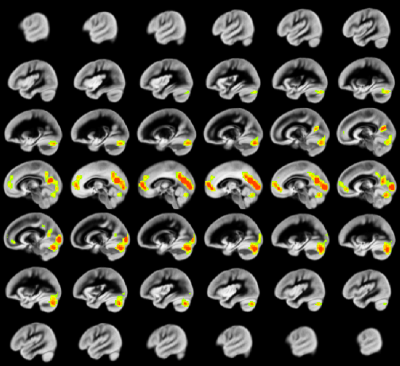 |
44 | The Relation Between Nasal Nitric Oxide and Neurocognitive Outcome is Mediated by Regional Cerebral Blood Flow in Healthy Adolescents and Adolescents with Congenital Heart Disease
Vincent Schmithorst, Ashok Panigrahy, Philip Adams, Cecilia Lo
Nasal nitric oxide (nNO) may be a proxy for NO or NO synthase (NOS) availability in the brain, while NO/NOS availability is likely related to metabolism and downstream to neurocognitive function. We tested this hypothesis using a mediation analysis with nNO the independent variable, regional CBF (rCBF) as measured by ASL the mediator, and neurocognitive outcome (NIH Toolbox) the dependent variable in a cohort of normal adolescents and adolescents with congenital heart disease. Anterior and posterior default mode network regions positively mediated all NIH Toolbox composite scores, especially crystallized cognition. Results indicate nNO may be a powerful biomarker for brain function and metabolism.
|
|
0045.  |
45 | Investigating the effects of an early intervention in preterm newborns: A resting-state functional connectivity study
Serafeim Loukas, Djalel Meskaldji, Lara Lordier, Joana Sa de Almeida, Dimitri Van De Ville, Petra Huppi
In this
|
 Back to Program-at-a-Glance |
Back to Program-at-a-Glance |  Back to Top
Back to Top